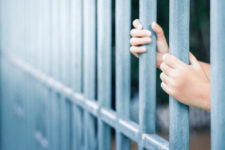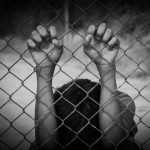Should the Age of Criminal Responsibility in Australia be Raised?

During the 12 month period 2017-2018, more than five-and-a-half thousand young people aged 10 and over were under youth justice supervision on an average day.
Eighteen percent were in detention and, of those , 60% were unsentenced. Half were Indigenous.
These are the numbers from the most recent Australian Institute of Health and Welfare (AIHW) youth justice report.
These figures have contributed to calls to raise of the age of criminal responsibility in Australia from 10 years to 14.
The Current Law
In New South Wales, the law assumes that children aged under the age of 10 cannot be found guilty of an offence.
This principle is enshrined in section 5 of the Children (Criminal Proceedings) Act 1987.
Children aged between 14 and 17 can be charged and convicted of a criminal offence – but they will be tried in a special children’s court, which applies different sentencing principles and laws to preserve the child’s best interests. It is not until a person turns 18 (or 17 in Queensland) that they can be tried as an adult in an adult court.
The law is a little more complicated for children aged between 10 and 14: Most Western countries apply the principle of doli incapax to that age bracket – which is a presumption that children of that age are incapable of forming the intention required to commit crimes.
This, however, is a rebuttable presumption – meaning that if the prosecution is able to establish that a child understood what they were doing was ‘seriously wrong’ – along with each element of the offence in question – the child can be tried and convicted of a crime.
This is indeed what occurred in the Bulger case, with psychiatrists testifying that both Venables and Thompson knew the difference between right and wrong – and were aware that their actions were seriously wrong.
But some say that 10 is far too young to be held criminally responsible – and argue that the time is ripe to raise the minimum age of criminal responsibility in line with international legal principles.
Push to raise the age of criminal responsibility
This week, the Australian Medical Association and Law Council of Australia have joined forces to lobby the federal government to lift the age of criminal responsibility to 14.
This is not a new debate. For many years Australia has been under pressure from national and international organisations to raise the age and stop putting children in prison.
Horrific abuses at the Don Dale Correctional Centre in the Northern Territory which were exposed by various media during 2015 and 2016, including the use of tear gas and masks, excessive force, solitary confinement and the transfer of children as young as 14 to adult prisons, put the issue of child incarceration firmly in the spotlight.
Reform is both welcomed and supported by Amnesty International, Save the Children, and the United Nations.
Attorney-General against raising the age
But New South Wales Attorney General, Christian Porter, does not support such a move, publicly stating that he is “not overly enthusiastic about that reform”.
He has also gone on record saying that the present system “works relatively well” and “allows flexibility” for “instances where it is appropriate to prosecute people who’ve been under the age of 14 for very serious offences”.
These words are a difficult pill to swallow given that the statistics and the anecdotal evidence both show otherwise. While the preference nationwide is that detention be considered a last resort for juveniles, there are still a large number of young people behind bars.
The latest AIHW youth justice report also found that although only 5% of people aged 10-17 in Australia are Aboriginal, they make up almost half of those under youth justice supervision.
The report also found 39% of young Indigenous people were between 10 and 13 when they first came into the justice system, compared with only 15% of non-Indigenous young people.
Youth incarceration sets kids up for a life of crime
Here’s what we already know thanks to years of research, statistics and other evidence:
The large majority of children who find themselves in trouble with the law are not serious offenders. And yet, we also know that once a child has been in trouble with the law, they are at greater risk of spending the rest of their lives jousting with it, unless intervention takes place.
And while of course it is important that children are taught consequences, there is also a very strong case for giving youth a second chance: More time to gain a stronger foothold, to learn to make better choices, and to choose a different path.
Incarcerating them at a young age only sets them up for a life that will typically, be spent in and out of detention, socially marginalised, with the only significant opportunity to make friends with others who also know crime as a way of life. Their tragic stories write themselves.
Of course, we must also recognise the very real fact that Indigenous people of all ages, not just youth, face systemic racism at every level of the justice system which only disadvantages them further.
Why do youths break the law?
There are almost as many reasons kids get in trouble with the law as there are kids. Common factors include: boredom and opportunity, lack of supervision, peer pressure, social isolation, parents who are criminals, troubled home life, abuse, mental illness and depression, lack of education, poverty, attention-seeking, truancy … and the list goes on.
Indigenous youth are 17 times more likely to be in detention than any other Australians. In Western Australia, that figure is 27 times.
In order to reverse this, we must consider a different approach, and raising the age of criminal responsibility will certainly go a long way towards reducing youth incarceration rates overall.
Finding alternatives
For our Indigenous youth, we also need to put in place wider strategies to assist them to develop essential life skills to break the cycle of generational trauma, poverty, addiction etc… and to make self-sufficient lives for themselves. A key place to start is education.
The 2016 Grattan Institute report shows the average year nine Indigenous student is five years behind with maths, six years behind in reading and seven to eight years behind in writing. Interestingly, the lags are not just prevalent in rural and remote areas, but cities too.
The Federal Government has been pretty transparent about the poor performance of its Closing the Gap Strategy which was originally implemented to address the ‘Aboriginal and Torres Strait Islander disadvantage in health, education and employment.’
Despite much intention, effort and funds, this has proven to be a very complex problem to solve.
Around Australia, diversion programmes, culturally sensitive rehabilitation and circle sentencing have all been trialled on relatively small scales, with exceptionally positive results.
One thing is clear, if we’re serious about giving our youth a good start, then we need to stop locking them up and instead help them to get an education so that they can participate in society confidently.
Certainly too, we can learn from some of the practices in Europe that focus on restorative justice for juveniles emphasising reintegration over retribution, dealing with the underlying causes of offending. The results have shown that young people that participate in community-based processes – such as mediation and conflict resolution – have lower recidivism rates.
Many believe it’s high time Australia engages in a more healing approach towards youth, with a much greater emphasis on addressing the underlying social disadvantage that causes young people to go off the rails.







